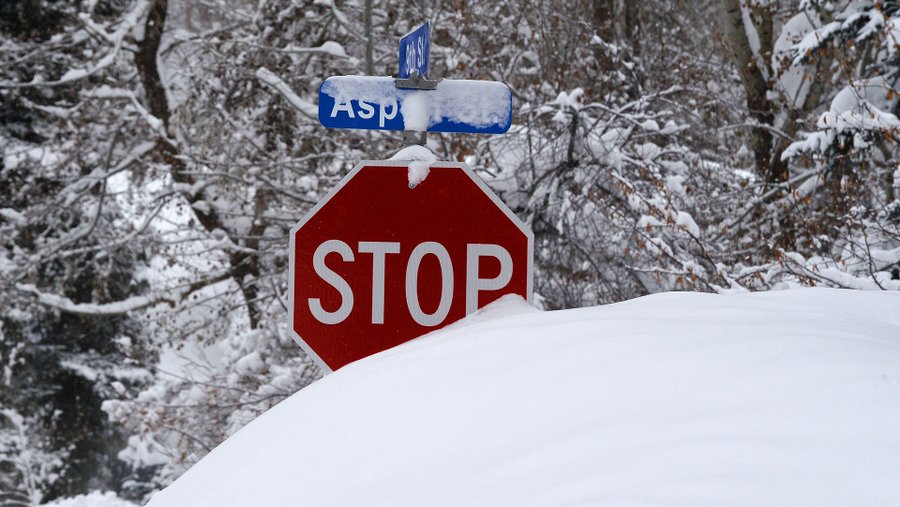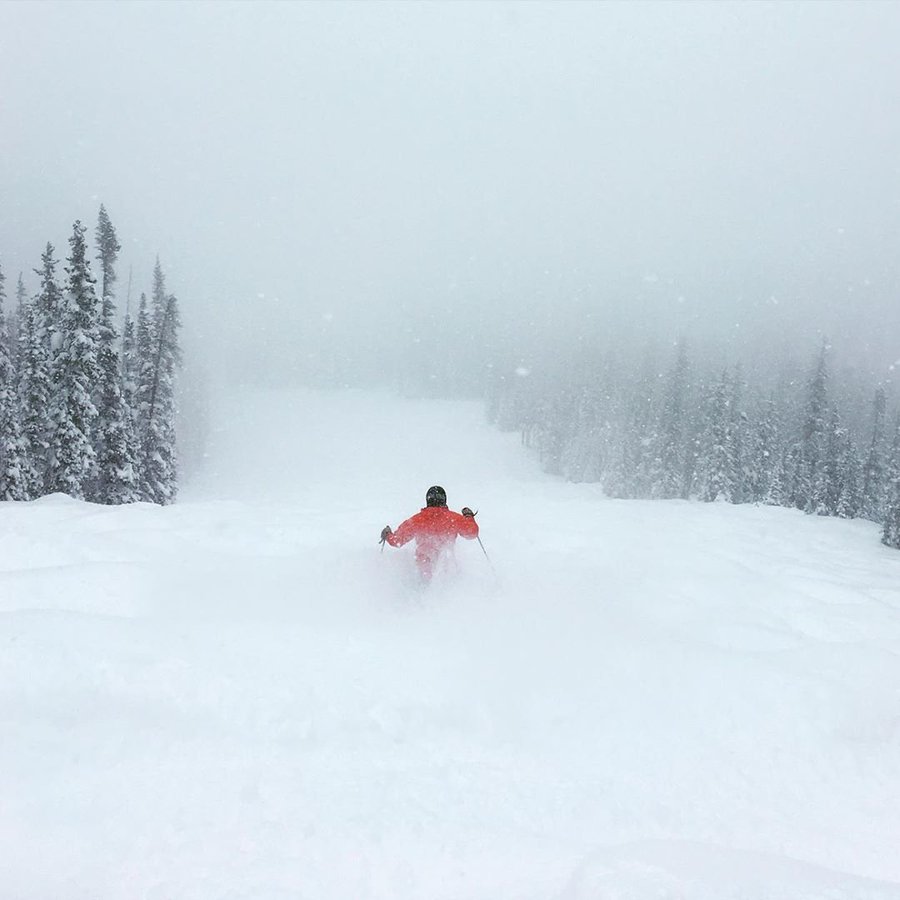 A recent view of Steamboat Ski Resort, Colorado, where there have been excellent skiing conditions this season.
A recent view of Steamboat Ski Resort, Colorado, where there have been excellent skiing conditions this season.
While much of the eastern U.S. has been basking in a mild winter, parts of the West that thrive on winter recreation are loving repeated mountain snowfall events.
The season has been looking very good for most areas, with the exception of the Sierra, where an extended period of recent dry conditions has brought up the “D” word - drought - again.
(MORE: California is Drying Out Again)
The latest map of snow water equivalent (SWE) - the estimated water content of the snowpack - across the West shows the bounty that most of the Rockies through Colorado, Wyoming, Idaho and Montana are seeing.
The Wasatch have had a great season, and the Cascades have had numerous winter systems provide a fresh blanket of snow recently.
 Status of Western snowpack, expressed as a percent of average water content of snow, as of Feb. 18, 2020. Most of the area had near or above-average snowpack, at the time.
Status of Western snowpack, expressed as a percent of average water content of snow, as of Feb. 18, 2020. Most of the area had near or above-average snowpack, at the time.
A brief survey of ski resorts in Colorado has them jumping for joy.
Breckenridge reported a seasonal total of 292 inches of snow and are looking forward to more in the next several days.
KWGN-Denver meteorologist Matt Makens noted that many of the mountain ski areas are doing very well this season, due in part to a favorable northwest flow of the jet stream providing enough lift to generate snowfall when even the smallest of weather systems moves through.
No, they don't really want it to stop. Snowfall stats from @skisteamboat:
101 inch base at the summit, snowed 12 of 17 days this month, snowiest February since Feb 2013, & less than 10 inches to reach the 300 mark for the season.
Pic by Larry Pierce.
See Matt Makens's other Tweets
However, it's not all good news in Colorado.
Parts of the San Juan and Sangre de Cristo Ranges in southern Colorado have been missed by a number of winter events and are running below average in snowfall.
Makens noted that the higher snow water equivalent in the Colorado snowpack can go a long way in providing runoff to not only the Colorado, but also the Arkansas, Rio Grande and Platte rivers as we head into spring and summer.
Much of the West, as in the East, has been warmer than average this winter season.
However, the Mountain West has significant elevation to count on, and as you go higher in elevation it gets colder, cold enough to keep snow falling at all of those winter recreation sites.
Today has been downright dreamy!: @suzy_q_robbins Check out the snow stake (as of 1:45pm)
#powday #winterparkresort
See Winter Park Resort's other Tweets
The exception in this snowy season, unfortunately, is in the Sierra where snowpack is only running about 50% of average for this time of the year.
Mammoth Ski Resort near Lake Tahoe has picked up only 141 inches of snow this season. That pales compared to last year at this time, when they had already picked up a whopping 376 inches of seasonal snowfall.
 Left: The basin-wide snow water equivalent percentages in the Sierra. The number on the left is percent of the April 1st average and on the right is the percent of average for Feb. 18, 2020.
Left: The basin-wide snow water equivalent percentages in the Sierra. The number on the left is percent of the April 1st average and on the right is the percent of average for Feb. 18, 2020.Right: A satellite view of the Sierra snowpack on Feb. 18, 2020.
The graph below shows several plots including this year’s percent of snow water equivalent (SWE) through the season (dark blue), along with the average SWE through a season (light blue shaded curve). I also added last year’s plot (light green), the record high in 1982-83 (red) and the record low in 2014-15 (blue) to give an idea of where this season stands historically.
 Snow water content percent of April 1 average in the northern Sierra (top graph) and central Sierra (bottom graph) through Feb. 18, 2020, compared to average (light blue shaded area).
Snow water content percent of April 1 average in the northern Sierra (top graph) and central Sierra (bottom graph) through Feb. 18, 2020, compared to average (light blue shaded area).
By this time of year it’s imperative to get snow while it's still the wet season.
Without snowpack to reinvigorate reservoirs as spring snowmelt to provide for irrigation in the dry months, California may be heading into another serious situation.
The latest 6-10 day outlook from NOAA’s Climate Prediction Center shows better chances for cold weather across the West.
Unfortunately for the Sierra and far West, there is little hope for significant precipitation in that timeframe. However, the bounty may very well continue farther east across the Rockies.
 NOAA's 6-10 day temperature (left) and precipitation (right) outlooks from Feb. 24-28, 2020. It will be cold enough for snow throughout the Mountain West, but not everyone is going to see the precipitation.
NOAA's 6-10 day temperature (left) and precipitation (right) outlooks from Feb. 24-28, 2020. It will be cold enough for snow throughout the Mountain West, but not everyone is going to see the precipitation.
With a healthy snowpack in the mountains, there is also a threat of avalanches.
So far this season, avalanches have claimed 16 lives in the U.S., according to the Colorado Avalanche Information Center.
On average, 25 to 30 avalanche fatalities are recorded each season in the U.S.
So, get out there and enjoy the snow, but please be careful and always check the weather and avalanche forecasts before you head out.
The Weather Company’s primary journalistic mission is to report on breaking weather news, the environment and the importance of science to our lives. This story does not necessarily represent the position of our parent company, IBM.
The Weather Company’s primary journalistic mission is to report on breaking weather news, the environment and the importance of science to our lives. This story does not necessarily represent the position of our parent company, IBM.






No comments:
Post a Comment